ANDY JEFFERSON INTERVIEW—“IF THEY LET ME RACE ONCE, I WOULD NEVER ASK AGAIN”
ANDY, LET’S BEGIN WITH HOW YOU GOT INTO DIRT BIKES. I was born in San Francisco and later moved to Victorville, where I live currently. I started riding motorcycles when I was around 8 years old, which was probably in the late 1960s. I started riding dirt bikes because Victorville was in the middle of the desert. Victorville had about 12,000 people, and, as a kid, you either rode motorcycles or bicycles or you got into trouble. I gravitated towards motorcycles because most of my friends did.
HOW LONG WAS IT BEFORE YOU THOUGHT, “I WANT TO RACE”? Racing was not even in the cards for me. I got an official motorcycle, a Suzuki TS50, in 1971. It was a street bike that you took the lights off to ride in the dirt. Then I got a Honda SL100 in 1972. And as with the Suzuki, I had to take all the lights off to ride it in the dirt. But then, in 1974, I got a Suzuki TM100.
I had friends who raced, but racing was never in the cards for me because my mom was against me racing motorcycles. My older brother got killed when I was about 10 years old, so my mom was very protective. I was the youngest, her baby boy, so she felt, “I am protecting him. He is not racing motorcycles.” It took a few years, but I did my first race in late 1975. I raced with the promise that if they let me race once, I would never ask again.

IS IT TRUE THAT READING DIRT BIKE MAGAZINES IS WHAT GOT YOU INTERESTED IN MOTOCROSS? Yes, but there is a longer story to it. I don’t know how old I was, but I had trouble in school. I struggled with reading. I don’t really want to use this term, but I rode the “short bus.” I was a “slower kid.” I did all these “exercises” to help with my reading.
Finally, one of the counselors at my school gave me a dyslexia test, and that was what I had. So, they told my dad, “Andy has dyslexia. He needs to read stuff that he loves. What does he like to do?” My dad said, “He likes motorcycles and bicycles.” The counselor said, “Get him every motorcycle magazine in the world and let him read them.” My dad had a bunch of magazines: Cycle World, Dirt Bike and Motocross Action Magazine. That forced me to read, and that is how I got interested. Seeing the racing in Europe was incredible, because to me, Europe was so far away and different. It worked two-fold. It got me interested in dirt bikes, and it taught me to read. Ultimately, it made my dyslexia a little better.
LET’S GET BACK TO YOUR FIRST RACE. WHAT HAPPENED? Well, I raced the Beginner class, because I had only ridden in the desert and never on an actual racetrack. I ended up winning the race. I actually beat all the Novices and Intermediates. Only two Expert guys beat me. So, my feeling was, “Wow! This is fun!”
YOU MUST HAVE BEEN ECSTATIC. Oh, I was. I had never competed and never ridden on a track before. I rode my desert track but not a ‘real’ track. But after doing so well, I thought, “Man, this is fun.” At the time, it was still not an “I’m turning Pro” decision. I just liked riding my dirt bike.
“IT WAS RACISM, BUT I NEVER THOUGHT THAT IT REALLY EXISTED IN MOTOCROSS. I THOUGHT I WAS JUST LIKE EVERYONE ELSE ON
THE STARTING LINE, BUT OBVIOUSLY I WAS NOT.”
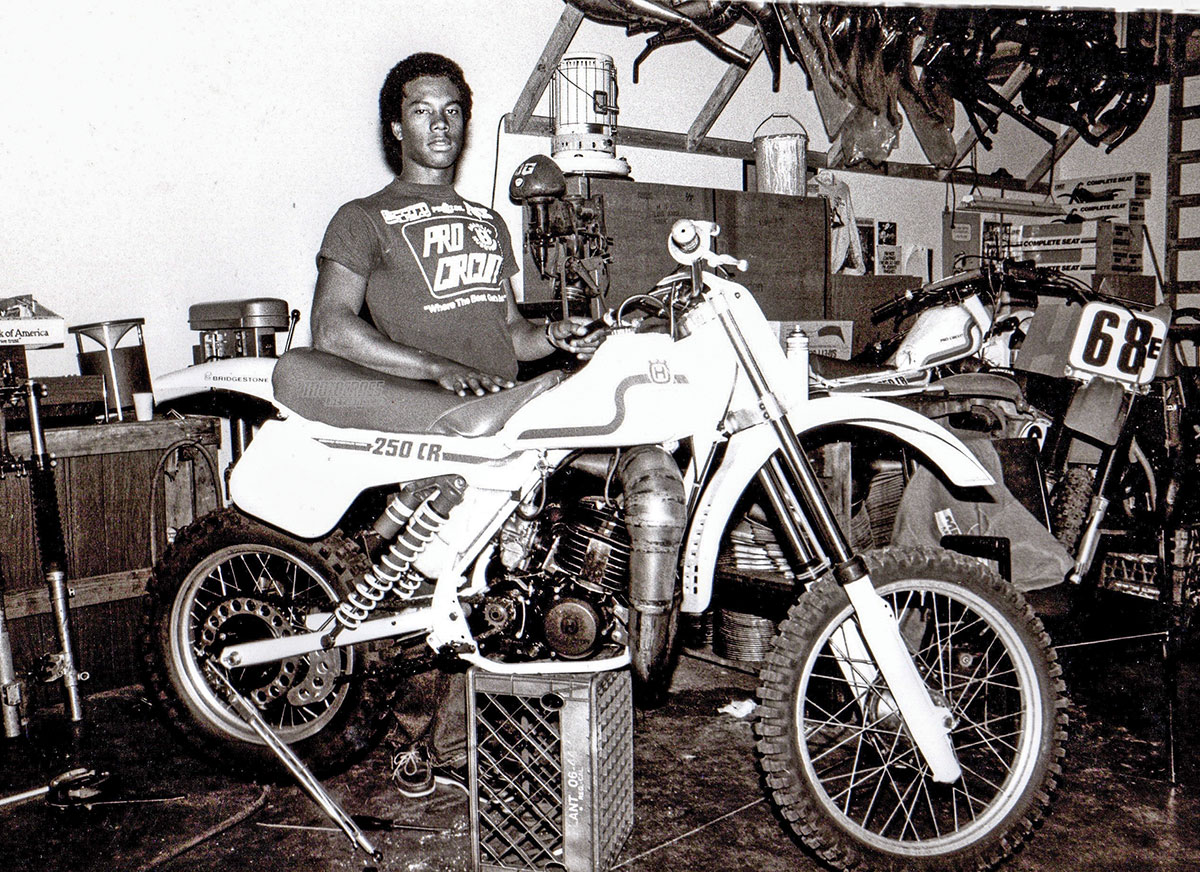
WHEN DID YOU TURN PRO? I turned Pro at age 17 because I was doing very well. But, I need to explain a bit; I only raced in the high desert. I raced at 395 Cycle Park all the time. I had a good connection there because the guy who owned the local motorcycle shop owned the track, so I could go there often. I was really good there, but at my first race at Saddleback, I got killed. I wanted to quit riding motorcycles because I got beat so bad.
I was not used to getting beaten at 395 Cycle Park. My dad would always say to me, “Up here, you are the big fish in a small pond, but when you go down the hill (as we called it) to these bigger tracks, you are a small fish in a big pond. You have to learn what they do and how to do it.” It took time, but I got better and better at different tracks. I was used to the sandy desert tracks, but when I went to Saddleback, Indian Dunes, Escape Country or Arroyo, the tracks were hard pack. It was a completely different riding style for me and a completely different way of getting around the track. It took a while to learn.
AFTER TURNING PRO, DID YOU IMMEDIATELY GO TO THE AMA NATIONALS? No, I raced mostly CMC and CRC at the time. I never expected to go to the AMA Nationals, because it cost a lot of money because of the travel. My parents did not have a lot of money, and I was on a shoestring racing budget. The local motorcycle shop owner was a good friend, and I started working there after high school. I would sweep the floors for $2 an hour to get money for parts. He had a grandson who was into racing, so he would always help me or take me to the races. The first National I did was in 1978 or 1979, with Rex Staten helping me in 1979.
The 40-minute motos were completely different from anything I had ever done. I don’t even remember where I finished. When I came back from that, I trained and rode with Rex all the time. He helped me learn race craft. I was not the most talented guy when it came to the craft of motorcycle racing, but I was tenacious. I did not give up. That was something that my dad always pounded in my head, “You do not need to have the best style, but you have to be in shape. You have to be able to go where the other guys can’t go.” So, from a young age, I learned how to train, ride bicycles, run, and go to the gym. That was the way for me to be better.
WAS IT TOUGH TO GET SUPPORT BACK THEN? My support came from the local Suzuki shop, from the owner talking me up and taking care of me. I was not good at self-promotion. It has always been that way for me. It was instilled in me from the time I was a little kid that you do the work and things come from doing the work. I simply thought if I did well at the races, people would see that and help me out. But, I came to find out that that is really not the way it is.
A little later in life, I met guys I would lap in a race, and they would get double whatever I got because they could talk. And that is still true today. If you are in the right place at the right time and have the ability to talk about yourself, be a self-promoter, you can get more. But, as I said, I thought by just doing well that I would get support.
“ONE DAY MY DAD CALLED AND SAID, ‘SOME GUY NAMED MITCH PAYTON WANTS YOU TO CALL HIM.’ I REALLY DIDN”T KNOW ANYTHING
ABOUT MITCH OR PRO CIRCUIT, BUT I CALLED.”
YOU EVENTUALLY ENDED UP ON MITCH PAYTON’S PRO CIRCUIT TEAM. HOW DID THAT COME ABOUT? First, I am very loyal when it comes to somebody helping me or doing something for me. I am not one to turn my back on them, and it was very hard for me to move to Mitch’s Husqvarna team, because the owner of the local Suzuki shop really molded me. He helped me get to where I am today because of the lessons I learned from him. I had always been with Suzuki because of his Suzuki shop, and I thought I would eventually get support from Suzuki.
WHAT CHANGED? Well, I used to practice with a few guys on this long 20-mile track we had out in the valley. It was “one way,” so we would ride out as a group and return as a group. One morning, one of the guys left earlier than we did and realized that he had not filled his gas tank. He turned around and rode backwards towards us as we were riding towards him. We hit head-on. I was going 60 mph and never saw him. I broke my kneecap, neck, jaw, and my collarbone.
I spent three weeks in traction at the hospital. This happened in June or July, because the Superbowl of Motocross was supposed to be my first ride with support from Suzuki. So, the Suzuki support ride never happened. Later, I started riding again and winning in Southern California.
One day my dad called and said, “Hey, some guy named Mitch Payton wants you to call him.” I didn’t really know anything about Mitch or Pro Circuit, but I called. He said, “Do you want to ride for us? We will buy you bikes and parts and give you everything you need to win races in Southern California.” I just said, “Perfect.”
For me, the conflict was leaving the owner of the Suzuki dealership who had taken care of me all those years. But, the first thing out of his mouth was, “You have no choice.” Which was obviously the right choice, because I did not have a ton of support.
HOW MUCH RACING COULD YOU DO IN CALIFORNIA IN THE 1980s? We would race on Wednesday, Thursday, Friday and Saturday, and then go somewhere big on Sunday, generally some big-purse race. We raced all over Southern California. Depending on the track, there were always guys who were specialists there. Mitch always wanted to concentrate on the number 1 plate in California. I raced a couple of Supercrosses here and there, only ones that were local—no Outdoor Nationals at this stage. I stayed in Southern California, trying to do the best possible to win the number-one plate for the year.
WERE YOU MAKING A GOOD LIVING? Yes. Today’s riders don’t understand how lucrative SoCal was if you raced four to five days a week at a different track each day or night. You could make a good living. Most of the fast SoCal guys at that time didn’t ride the Nationals, because it would cost them money. If you got 20th at an AMA Supercross, you got $200. You could make that at one local race without traveling. It was always 100-percent or 110-percent payback with 30 guys on the line. Riders outside of Southern California raced the Nationals because they did not have what we had in SoCal.
For us, motocross was a way of life. You raced every day of the week. You did not practice; you just raced every day. It was an amazing time to be a motorcycle rider. I could not imagine what guys on the East Coast were doing, because we were riding all year round. The incentive for us was to make money, have a good time and not travel all over the place to race.
“I NEVER THOUGHT ABOUT BEING THE FIRST AFRICAN-AMERICAN TO RACE A SUPERCROSS MAIN. I JUST THOUGHT, “I CAN’T BELIEVE I MADE A MAIN.”
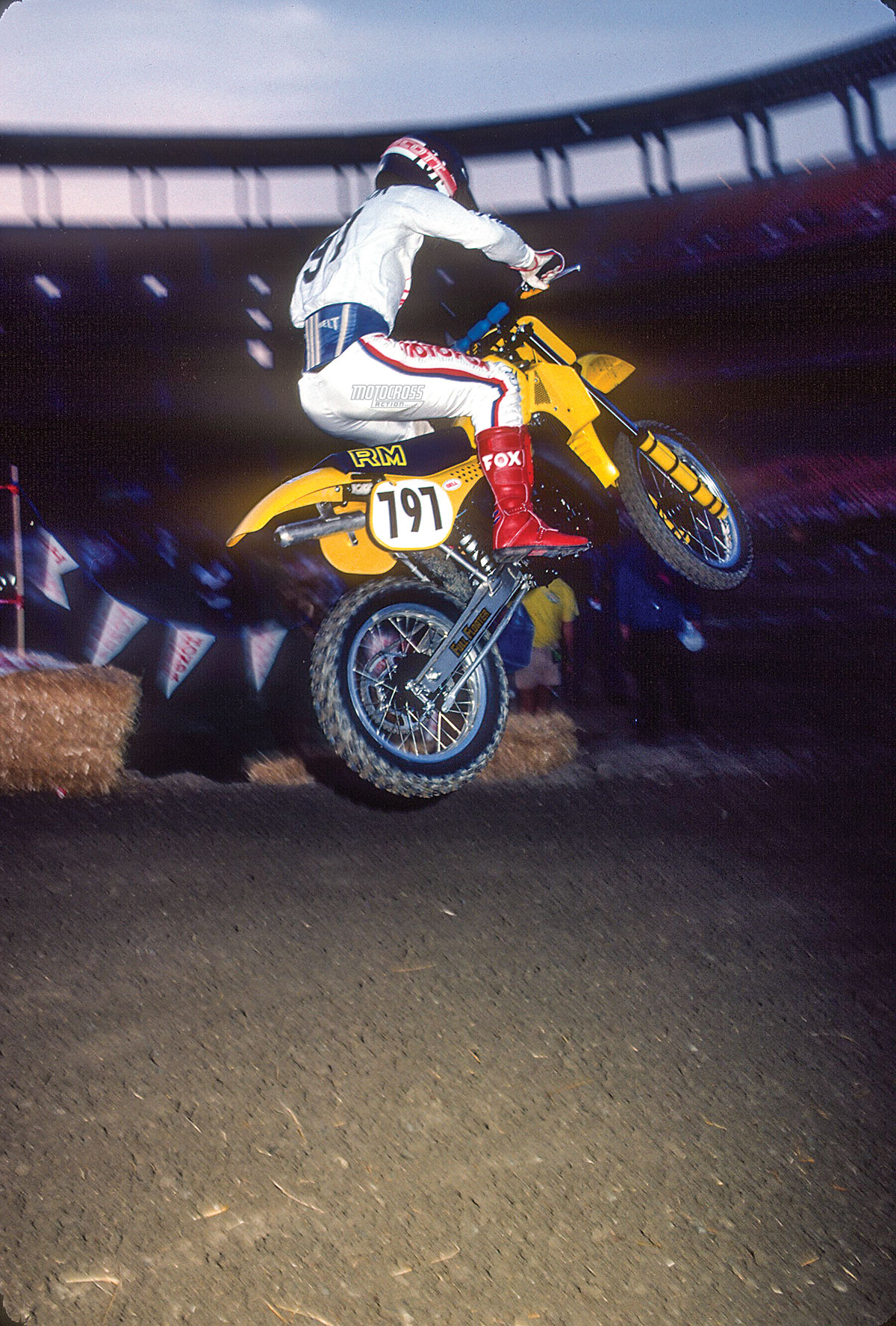
SINCE YOU MENTIONED SUPERCROSS. YOU WERE THE FIRST AFRICAN-AMERICAN RIDER TO EVER QUALIFY FOR A SUPERCROSS MAIN. I would generally make it into the night show, but I was not making mains. I hate to sound like a whiner, but I think that the production motorcycles I raced were far from being as good as the factory bikes. The right events had to happen for you to make a main as a true privateer back in the 1980s.
Mitch was between sponsor contracts when the 1982 San Diego Supercross rolled around, so he said, “Just do whatever you want for San Diego.” I really did not have another bike at the time. But, my previous Suzuki dealer asked, “Hey, do you want to race this bike? Here are two brand-new 1983 RM250s. You take them, race them and do what you need to do.”
That was on Wednesday. I first rode the bike Thursday. I did not have a Supercross track to practice on, so I rode out in the desert where I had been riding all my life. I packed the bike up, drove to San Diego and raced that same bike on Saturday night. I did not change the suspension or anything, with the exception of a silencer that Mitch gave me. I even raced with the stock tires. So, I picked it up Wednesday and raced three days later.
AS AN AFRICAN-AMERICAN, DID YOU REALIZE THAT YOU MADE HISTORY IN SAN DIEGO? I never wanted to be known as “the black kid” who raced motorcycles. I wanted to be known as a motocross racer. But, by the same token, I think if I was not African-American, I would not have gotten as much exposure as I got. When I went to a Supercross, people would cheer for me. They would come up and want my autograph. I would say, “Wait a minute, I am a nobody,” but I was different from most of the guys there. That is the only assumption I could make, because I was not the fastest guy there.
But, the fact that I was black hurt me in some respects. I found out later that I was never going to get a ride with Suzuki. It was never going to happen. At that time, the Japanese were not going to help an African-American race their motorcycles. It was racism, but I never thought that it really existed in motocross. I thought I was just like everyone else on the starting line, but obviously I was not. I never thought about being the first African-American to race a Supercross main. I just thought, “I can’t believe I made a main.”

DID YOU EXPERIENCE OTHER RACISM? There were times when people would make comments, especially when I raced on the East Coast. A couple of times I heard chirping about, “You are not going to take away our sport from us like you did basketball and football.”
I would say “Dude, I am just riding my dirt bike. I don’t care about the color of your skin, and you shouldn’t care about the color of mine. When I put my helmet on, you cannot tell who I am. I am here to race motorcycles, that is it.”
By the same token, what my mother and father grew up with was 100 times worse. My dad taught me that nobody’s words can hurt you; only you can let them hurt you. Even today, if someone says something to me that I don’t like, as long as it is not someone in my inner circle, like my wife or daughter, their words don’t mean anything to me because I don’t know that person. I live by that. I do my thing; you do your thing. And if you don’t like what I do, that is okay.
From the stories that my mom and dad would tell me, it made the little stuff that happened to me mean nothing. The times that racism happened to me, I would think back to what my parents lived through and would go, “This is no big deal.”
MITCH PAYTON HELPED YOUR EARLY CAREER. WHO ELSE? I owe a debt of gratitude to lots of people, but back in the Mitch Payton days, I met Jody Weisel when we were racing at Saddleback. I was just a kid, but he always had a kind word. He helped me if I needed it and answered all my questions. He guided me in not just understanding the motorcycle industry but how to deal with the media and the frustrations of the job. I was a kid who rode in the desert. I did not understand anything about racing motocross or the business behind it. To this day, I ask Jody stupid questions, and he always has the correct answer to whatever I come up with.
WHEN DID YOU DECIDE TO QUIT RACING? The last two years of my racing career, I started having knee issues from when I had that original surgery on my broken kneecap. My leg would swell up like a basketball after the races. I was getting Cortisone shots every couple of months just to try to ride. I probably did Cortisone for too long—for almost two years. I got to the point where I could not stand up. When I would put my foot on the ground, it would send shock waves up my leg.
At the end of 1984, I told Mitch, “I think I am done. I just cannot do this. I’m not going to take these shots anymore. I have to figure something out.” One of my best childhood friend’s parents owned an office products company, and his parents offered me a job. I thought, “I am never going to be a National Champion. I know that, and I must do what I need to do to get going in life,” so I quit racing at a high level. Obviously, I loved to ride dirt bikes, so I did still ride a little.
HOW DID YOU RETURN TO YOUR ROOTS AT HUSQVARNA? I had been at the office-products company for 27 years. Late in 2010, I got a call from a friend who said, “Hey, there is a job with BMW. They are restarting Husqvarna, and they have a position I believe you are perfect for.” I had been working in upper management at the office products company. I made really good money and could come and go as I pleased. I went home that night and talked to my wife. She said, “You have to do what you have to do. As long as you are happy, that is all that matters.”
I got some friends to help me write a resume, turned it in to BMW, and after the interview process, I got the job, which they called “After Sales.” It involved sales of Husqvarna accessories to dealers and Husky owners. I thought, “This is amazing. This is what I wanted to do. I have the greatest job in the world.” I was there for three years, until BMW sold Husqvarna to KTM.
WHEN KTM BOUGHT HUSQVARNA, WAS IT A SEAMLESS TRANSITION FOR YOU? No. When we first got the news, it was very weird. Our boss at the time was a BMW employee who had been put there to manage the Husqvarna guys. We all thought we were going to be fired. KTM came to the office to talk to each of us about what we wanted to do and what we could bring to KTM. I said, “I really like what I am doing now, so I want to keep doing this.” If KTM was going to bring Husqvarna to a new level, I wanted to be a part of it.
LATER YOU CHANGED POSITIONS, RIGHT? I was still doing the After Sales position when management came to me and said, “We need someone to manage the off-road race team.” Right away I said, “I will do it.” You could say that I made a big mistake, because I was continuing to do my other duties with Husky accessories while managing the Husqvarna off-road team. I traveled 42 weekends that year. I was never home, but by the same token, I would not change anything about it. I learned a lot, and it was a great time. It was hard work. When I started the race team, we had nothing—absolutely nothing. But, we did well.
FROM THERE YOU BECAME THE HUSQVARNA MEDIA MANAGER? After running the race team for a little over a year, management said, “We need someone to run Husqvarna Media, if you want to do it.” I said, “Yeah, for sure I will do that.” It got me off the road every weekend of the year, and I got to go out with editors and ride. I would take editors all over the place to ride our new bikes, do fun events and help educate them on what we were trying to achieve.
“THEY REFUSED TO BUY AN ORANGE BIKE, BUT THEY WOULD BUY A HUSQVARNA. HUMAN NATURE IS A FUNNY THING; THEY REALLY
WANTED A KTM, BUT THEY COULDN’T BRING THEMSELVES
TO BUY ONE, SO THEY BOUGHT A HUSQVARNA.”
DO YOU HEAR PEOPLE CALL HUSQVARNAS WHITE KTMs? I have heard it from time to time, and it used to bother me a lot; but, to me, it does not really matter. Yes, our bikes are similar. We use the same engine platforms and the same frames. But, I feel that when KTM bought Husqvarna, it pushed KTM forward also. Husqvarna had a loyal following that would never buy a KTM. It was not that the product was bad; they just refused to buy an orange bike. But, they would buy a Husqvarna, even though they knew deep down it was a KTM. Human nature is a funny thing; they really wanted a KTM, but they couldn’t bring themselves to buy one, so they bought a Husqvarna. It gave them all the great stuff they wanted, but it wasn’t orange; it was white. So, if someone wants to call it a white KTM, that is fine.
IS THERE AN EFFORT TO POSITION ONE BRAND DIFFERENTLY FROM THE OTHER? Absolutely. When we talk about the KTM brand, it is all about racing. “Ready to Race” is their slogan. Whenever we bring a KTM bike to market, it is about the racing. It is not about going out and having a good time. The Husqvarna side is the “fun brand.” We are the bike that will take you out to go camping. It will take you wherever you want to go. It’s all about the experiences you can have on a Husqvarna. When you are riding a Husqvarna, it’s all about having fun on an almost perfect motorcycle.

TEST RIDERS CLAIM THAT THE HUSQVARNA IS BETTER FOR THE ALL-AROUND, VET-TYPE RIDER THAN ANY OTHER BRAND. IS THAT TRUE? These days, many people go into a showroom and buy a bike only to find out that it is too stiff and too tall. They deal with it, because they think that is the way it should be. In 2020, Husqvarna went in a completely opposite direction from the other brands. We went much softer on our suspension settings, and come to find out, people liked it, especially Vet riders. We did not purposely go after Vet riders; we just went with a softer setting to make the bike more compliant, and, in the process, to make it different from a KTM. In 2021, we have lowered the ride height. When you buy a KTM, it is a raw, ready-to-race dirt bike. We wanted our bikes to be more compliant and easier to ride fast. We are proud that test riders recognized what we were trying to do—and like our bikes.
I SEE A LOT OF HUSQVARNAS AT THE LOCAL TRACKS. HOW ARE SALES? Sales over the past five years have been amazing. We have done a great job of getting brand awareness. There are kids out there who recognize the name from stories their fathers or grandfathers told about when they raced. That has been very cool.
WHAT DOES HUSKY HAVE COMING IN THE FUTURE? We hope to start a groundswell of new young riders coming into the sport with our EE 50 electric Pee-Wees. We are hoping to get young families and kids interested in motorcycling with an electric mini bike that can be ridden in the backyard because it is so quiet. We are also looking into electric bicycles. Right now, the Adventure bike market is exploding, and we will be expanding our model line in that direction; however, we can never forget the motocross and off-road bikes that fueled our growth over the last 117 years of making Husqvarna motorcycles.



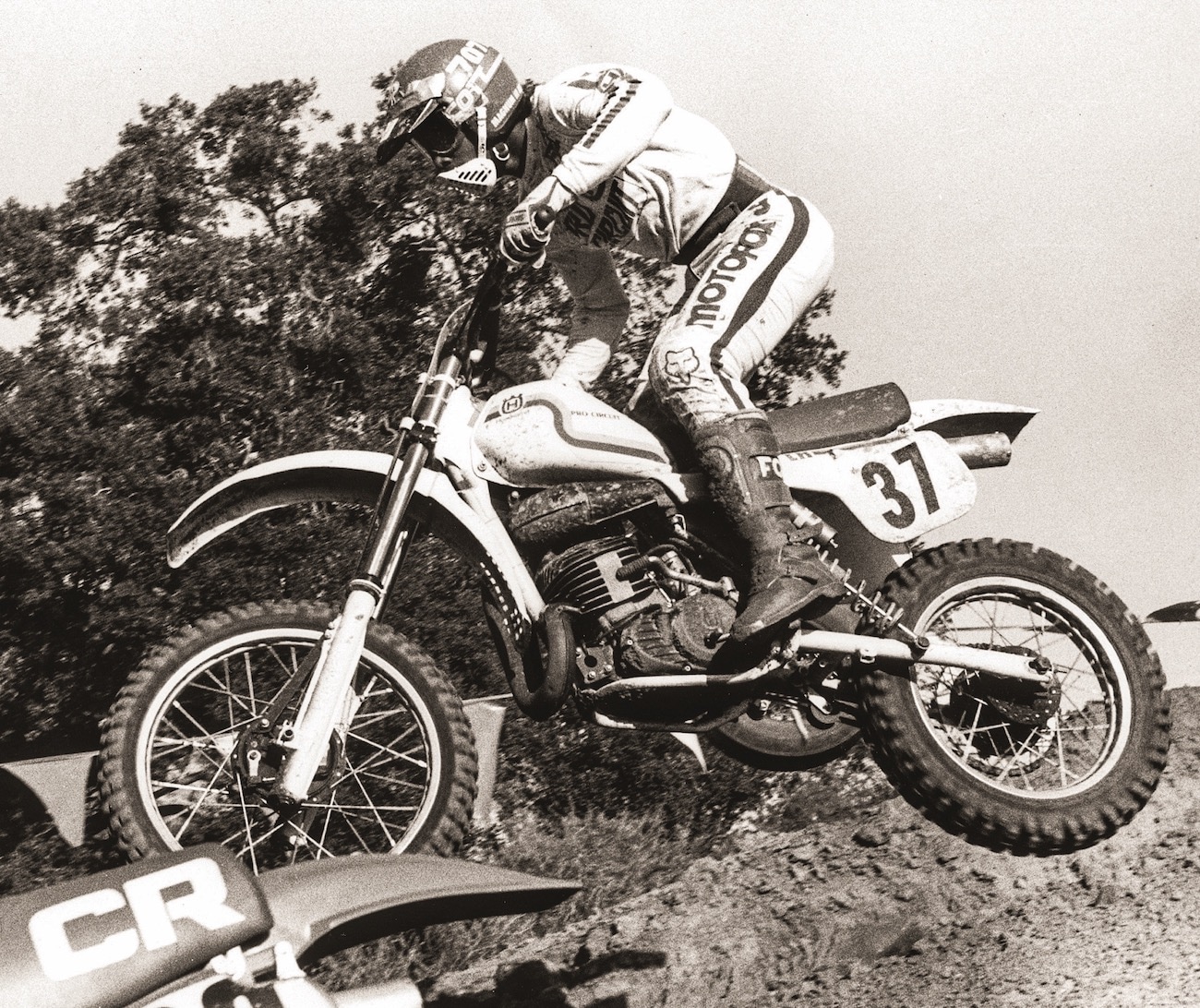
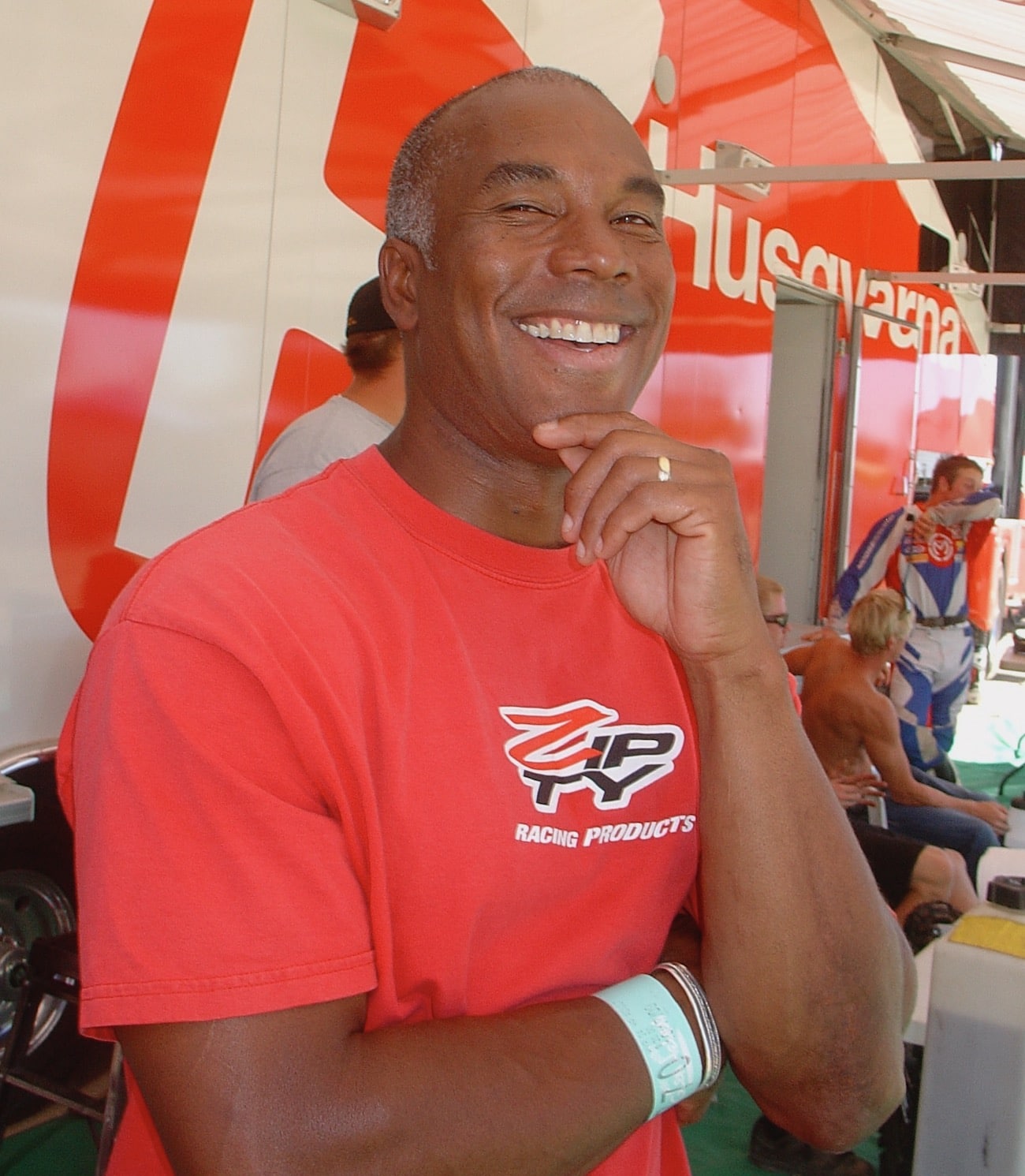
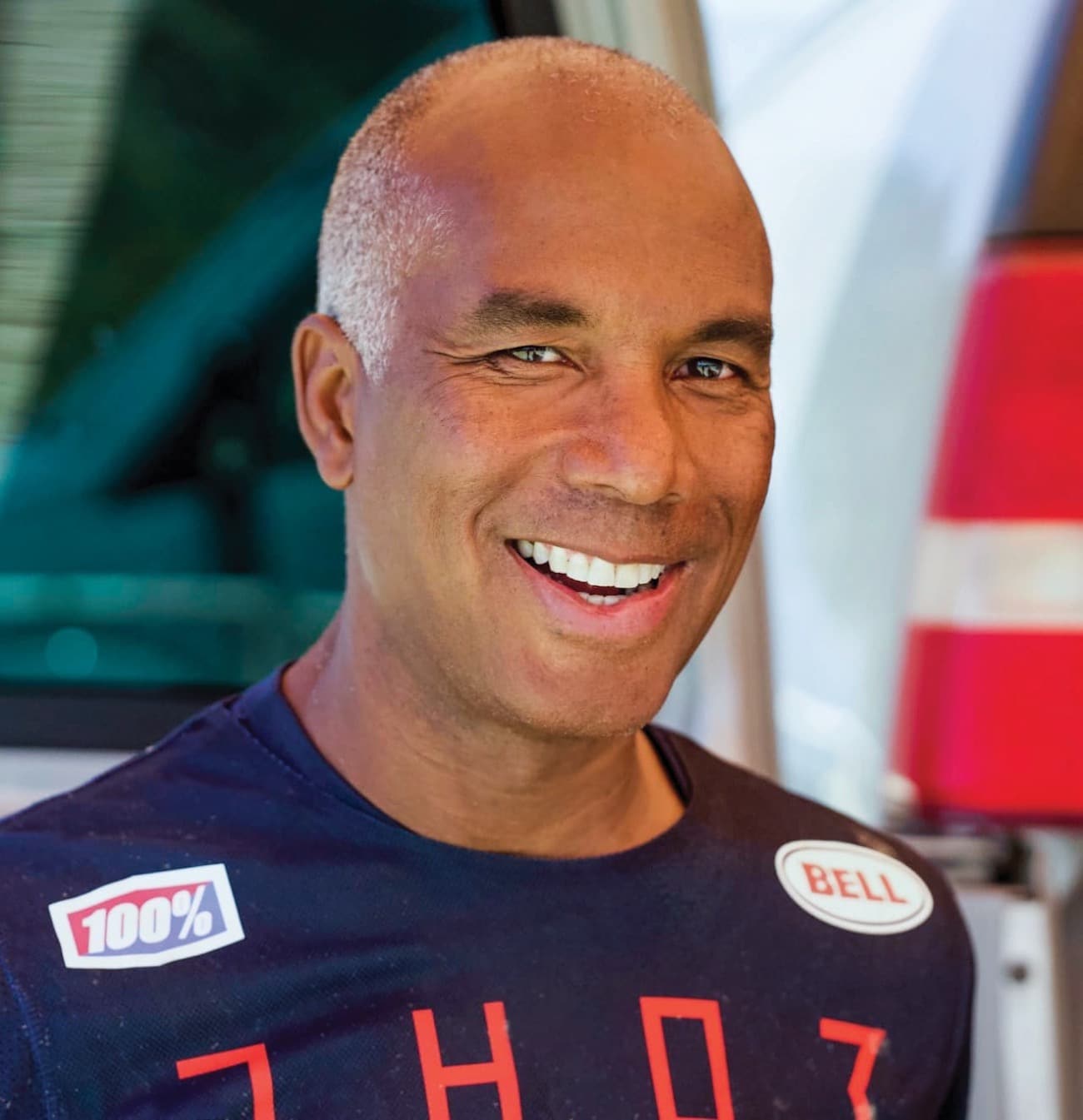


Comments are closed.